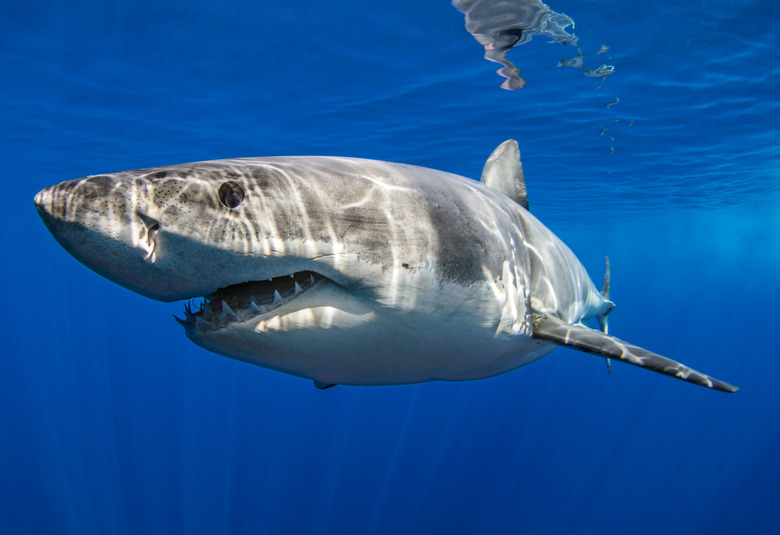Great White Sharks Avoid The Surface Until They're Big Enough To Scare You
- A new study of great white sharks reveals that young sharks spend much of their time as bottom-feeders rather than hunting near the surface.
- Shark attacks on humans are rare but they do happen, so finding where the creatures hunt is vital to understanding why attacks happen.
- The researchers say that the data they gathered will help in future white shark management efforts.
When you hear the name "great white shark" it probably conjures images of Jaws chomping on surfboards and wreaking havoc on coastal communities. While it's true that great white shark attacks on humans do happen — and can be incredibly devastating when they do — a new study suggests that for a large chunk of a great white shark's life, they'd prefer to hang out near the bottom of the ocean rather than the surface.
As LiveScience reports, researchers studied the stomach contents of dozens of young great white sharks to get a better idea of where they spend their time. Based on their findings, it seems that juvenile great whites are mostly bottom feeders.
The research, which was published in the journal Frontiers in Marine Science, examined the feeding habits of 40 great white sharks caught off the coast of Australia. In the stomachs of the animals, scientists found a mix of prey.
The most common food source identified was fish that swim about halfway between the ocean floor and the surface. This wasn't unexpected, but perhaps the more interesting finding is that over 17% of the prey animals that could be identified were bottom-dwelling fish. The researchers also found stingrays and reef-dwelling fish, and over 30% of the prey animals either couldn't be identified or were too small in quantity to track.
- Pelagic, or mid-water ocean swimming fish, such as Australian salmon: 32.2%
- Bottom-dwelling fish, such as stargazers, sole or flathead: 17.4%
- Reef fish, such as eastern blue gropers: 5.0%
- Batoid fish, such as stingrays: 14.9%
"Within the sharks' stomachs we found remains from a variety of fish species that typically live on the seafloor or buried in the sand," Richard Grainger, lead author of the study, said in a statement. "This indicates the sharks must spend a good portion of their time foraging just above the seabed."
"White sharks have a varied diet. As well as east Australian salmon, we found evidence of other bony fish including eels, whiting, mullet and wrasses. We found that rays were also an important dietary component, including small bottom-dwelling stingrays and electric rays. Eagle rays are also hunted, although this can be difficult for the sharks given how fast the rays can swim."
This is interesting for a number of reasons, not least of which is that when it comes to interactions between humans and great white sharks, the ones that find their way to the surface are either quite a bit older than the juveniles in this study, or they're swimming in areas where they don't typically hunt.
